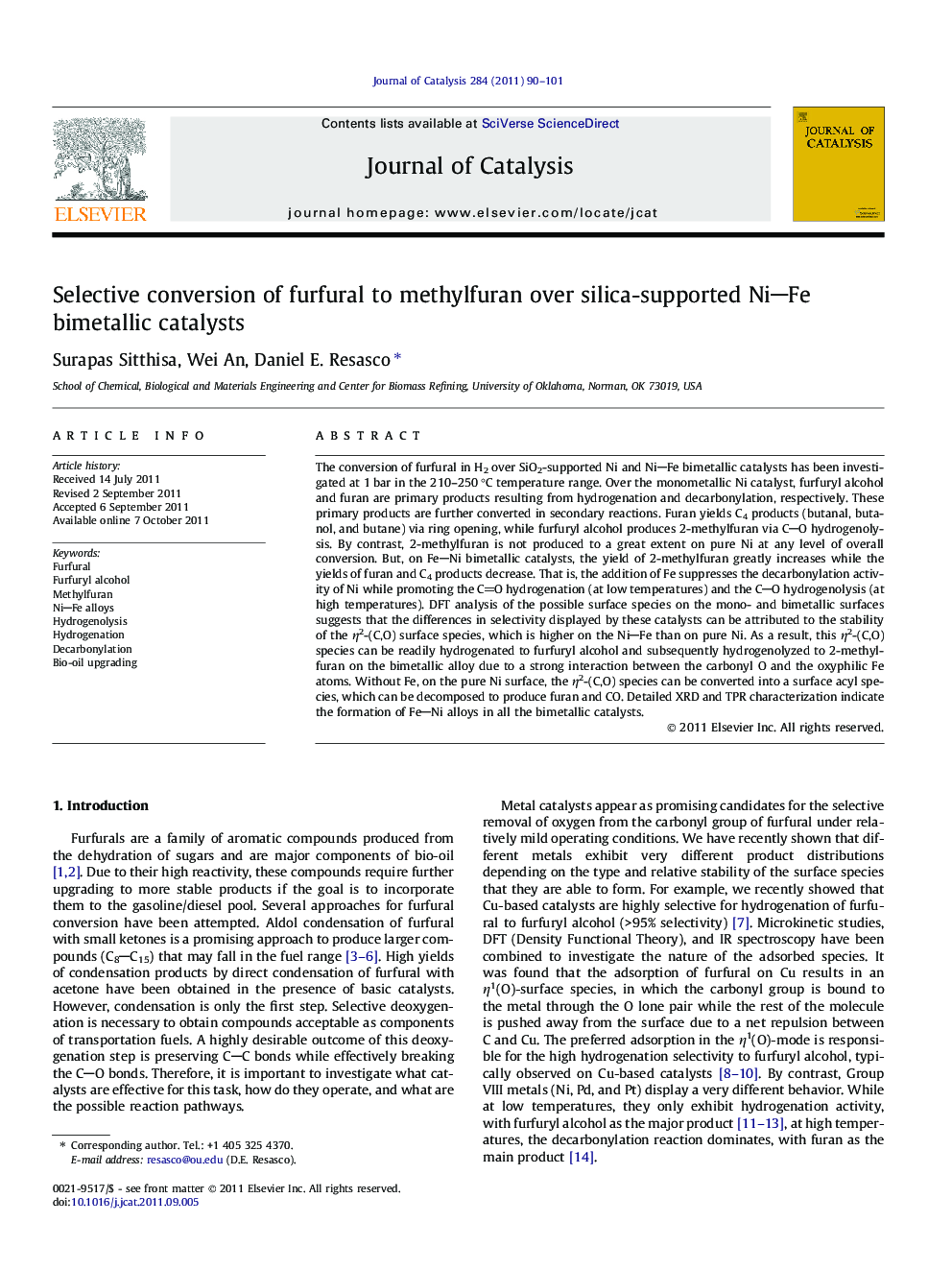| کد مقاله | کد نشریه | سال انتشار | مقاله انگلیسی | نسخه تمام متن |
|---|---|---|---|---|
| 61609 | 47592 | 2011 | 12 صفحه PDF | دانلود رایگان |

The conversion of furfural in H2 over SiO2-supported Ni and NiFe bimetallic catalysts has been investigated at 1 bar in the 210–250 °C temperature range. Over the monometallic Ni catalyst, furfuryl alcohol and furan are primary products resulting from hydrogenation and decarbonylation, respectively. These primary products are further converted in secondary reactions. Furan yields C4 products (butanal, butanol, and butane) via ring opening, while furfuryl alcohol produces 2-methylfuran via CO hydrogenolysis. By contrast, 2-methylfuran is not produced to a great extent on pure Ni at any level of overall conversion. But, on FeNi bimetallic catalysts, the yield of 2-methylfuran greatly increases while the yields of furan and C4 products decrease. That is, the addition of Fe suppresses the decarbonylation activity of Ni while promoting the CO hydrogenation (at low temperatures) and the CO hydrogenolysis (at high temperatures). DFT analysis of the possible surface species on the mono- and bimetallic surfaces suggests that the differences in selectivity displayed by these catalysts can be attributed to the stability of the η2-(C,O) surface species, which is higher on the NiFe than on pure Ni. As a result, this η2-(C,O) species can be readily hydrogenated to furfuryl alcohol and subsequently hydrogenolyzed to 2-methylfuran on the bimetallic alloy due to a strong interaction between the carbonyl O and the oxyphilic Fe atoms. Without Fe, on the pure Ni surface, the η2-(C,O) species can be converted into a surface acyl species, which can be decomposed to produce furan and CO. Detailed XRD and TPR characterization indicate the formation of FeNi alloys in all the bimetallic catalysts.
Left: TEM image of the NiFe bimetallic catalyst; Right: Optimized structure of furfural adsorbed on NiFe(1 1 1) surface.Figure optionsDownload high-quality image (113 K)Download as PowerPoint slideHighlights
► Upgrading of bio-oils requires preserving CC bonds while breaking CO bonds.
► Hydrogenolysis of furfural is a model reaction that represents desired selectivity.
► NiFe alloys are more selective for converting furfural to methylfuran than pure Ni.
► Decarbonylation and ring opening, catalyzed by Ni are suppressed by adding Fe.
► DFT indicates that NiFe alloys have a stronger interaction with carbonyl group than Ni.
Journal: Journal of Catalysis - Volume 284, Issue 1, 1 November 2011, Pages 90–101